Intel Performance Midrange
In recent months we have said in CPU recommendations that Intel and AMD enjoyed parity in the price ranges and processor speeds where they competed. Of course, AMD did not compete at the top speeds. We normally added that Intel still enjoyed a significant overclocking advantage if that was an important feature for you.
Things were shaken up quite a bit with the introduction of the new Intel Core i7 Socket 1366 CPU. Phenom did not compete nearly as well against the Core i7, but Phenom II is now leveling that playing field - in the upper midrange to low high-end where Phenom II now has competing speeds. In addition, the Phenom II 45nm finally removes the last real impediment to choosing AMD in this price range as it overclocks very well indeed and gives Intel a run for the money - clock for clock.
That makes choosing between the Intel Core i7 system below or the AMD Phenom II system on the next page a more difficult decision than it has been in quite a while. Both systems contain parts that have been chosen for their excellent overclocking abilities, and both motherboards can deliver the 3.8GHz+ overclocks that Core i7 and Phenom II are capable of reaching.
| Intel Performance Midrange PC | ||
| Hardware | Component | Price |
| Processor | Intel i7 920 Nehalem Socket 1366 (2.66GHzx4 4x256KB L2, 8MB L3 Cache) | $295 |
| Cooling | Vigor Monsoon III LT for Socket 1366 | $60 |
| Video | EVGA 01G-P3-1282-AR GeForce GTX 280 SuperClocked Edition 1GB | $320 |
| Motherboard | GIGABYTE GA-EX58-UD3R LGA 1366 Intel X58 ATX | $185 |
| Memory | G.SKILL 6GB (3 x 2GB) DDR3-1333 (PC3 10666) Triple Channel Kit | $145 |
| Hard Drive | Seagate Barracuda 7200.11 ST31000333AS 1TB | $110 |
| Optical Drive | LG BD/HD DVD / 16x DVD+/- RW GGC-H20LK | $99 |
| Audio | ASUS Xonar DX 7.1 | $90 |
| Case | Antec Nine Hundred Black Steel ATX Mid Tower | $100 |
| Power Supply | SILVERSTONE ST70F 700W SLI Ready CrossFire Ready 80 PLUS Certified Modular Active PFC | $100 |
| Display | ASUS VW246H Black 24" 2ms(GTG) HDMI Widescreen LCD Monitor (1920x1080) | $290 |
| Speakers | Logitech G51 155 watts RMS 5.1 Surround Sound Speakers - Retail | $90 |
| Input | Microsoft CA9-00001 Black PS/2 Standard Keyboard and Optical USB/PS2 Mouse - OEM | $16 |
| Operating System | Microsoft Vista Home Premium OEM | $99 |
| Bottom Line | $1999 | |
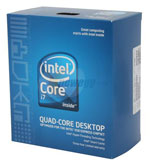 |
The i7 920 is the lowest priced Intel Core i7 you can currently buy - the other two choices are in the $600 to $1000 price range. Don't assume, however, that the 920 is not a powerful processor. The i7 920 is capable of reaching the performance levels of the top i7 CPUs, because it has also proved to be a dynamite overclocker for those who care about that, and that are also willing to provide decent cooling to the i7 920.
You start with a processor that is 30% faster in some parameters than a Core 2 Quad, and then you find you can also overclock this 2.66GHz CPU to 3.8GHz to 4GHz with careful tweaking and better cooling. As you saw in our Phenom II Launch review, the 920 reached as high as 3.8GHz at stock voltage and 4.0 GHz when overvolted to 1.35V. That is a 50% overclock. You will certainly be very happy with Core i7 base performance, but if you are interested in overclocking you will be ecstatic with this new CPU.
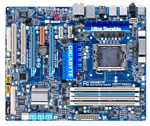 |
The Gigabyte GA-EX58-UD3R has the distinction of being the lowest priced X58 chipset motherboard you can currently buy. Others will soon join that $200+/- club shortly providing more X58 value choices. You probably also noticed that Gigabyte is trying to get as much mileage as possible from their UD3R designation. It seems reasonable to hold on to a good name as much as possible. AnandTech is in the process of testing this value Gigabyte board, and more info will come your way soon. Early user reports are very favorable, including great reports on overclocking. That was enough positive news to choose this Gigabyte for the Performance Midrange Intel System.
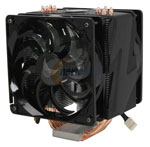 |
Several well-known coolers offer optional adapters for the Intel Socket 1366, but the cooler choice to mate with the Gigabyte X58 board is the Vigor Monsoon III LT. The last time a Vigor Monsoon was reviewed it was an effective but loud TEC (Thermo Electric Cooling) design. This Monsoon is a standard vertical heat-pipe air cooler, with effective and quiet push-pull cooling. The Monsoon appears a good match to the OC capabilities of the i7 920.
 |
At present, most of the editors at AnandTech prefer the performance of GPU solutions from AMD/ATI these days… that is, except when running Intel Core i7. The X58 chipset/Core i7 works best with an NVIDIA video card and drivers. AMD is aware of the issue and is working to provide improved drivers for the i7 platforms, but for now the choice for i7 system video card is the (deep breath…) EVGA 01G-P3-1282-AR GeForce GTX 280 SuperClocked Edition 1GB. This EVGA card comes factory overclocked to a core clock of 621MHz and an effective memory clock of 2268MHz. This video card really is not the equal in performance of the 4870 X2 used in the AMD Performance Midrange system, but the stability and trouble-free operation makes up for the small performance loss - at least for today.
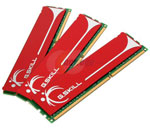 |
The Intel i7 system includes the G.Skill triple-channel DDR3-1333 6GB memory kit. To be blunt, most of the 1333 3x2GB triple-channel kits use the same memory chips, although there are sometimes differences in the SPD chip on the DIMM. We chose the G.Skill on the basis of best price for a 6GB triple-channel DDR3-1333 kit from a known brand. You can select from a number of quality memory suppliers, but make sure to include their warranty and customer service reputation in your decision.
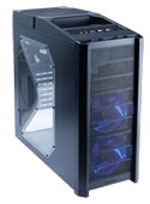 |
The case receives an upgrade with the selection of the well-regarded Antec Nine Hundred that bottom mounts the power supply and provides plenty of internal storage. Cooling is provided by 120mm fans and a massive 200mm top exhaust fan.
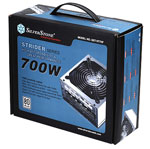 |
The power supply is the well-regarded Silverstone ST70F 700W SLI/CrossFire Ready 80 PLUS Certified modular PSU. The Silverstone 700W has made almost everyone's top performance list for a PSU and it is a good buy at its regular selling price. At the current selling price of $100, it is an outstanding value. The Silverstone is a modular power supply with the flexibility offered by custom cable selection and arrangement.
 |
The ASUS Xonar DX 7.1 is one of the top-performing audio cards on the market today. It is a great upgrade to the onboard sound if you want better sound quality. Game compatibility is excellent, but most game creators assume everyone has a Creative Labs sound card.
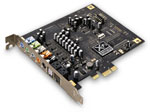 |
If your main reason for having a powerful i7 computer is gaming, you may prefer the Creative 7.1 Sound Blaster X-FI Titanium at the same price that we used in the AMD Performance Midrange system. In our opinion the sound quality is better on the ASUS or an HT sound card, but game compatibility will never be a question with a Creative Labs sound card.
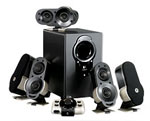 |
The speakers have been upgraded to the Logitech G51 155 watts RMS 5.1 surround sound speakers. They are selling for $90 after a $40 rebate, which is a great value on these well-regarded powered speakers.
 |
The LCD display resolution is the same 1080p HD resolution chosen for the Value Midrange systems. The size of the monitor increased to 24" so everything on screen is just a little larger. The ASUS VW246H 24" provides the preferred HDMI input, as well as DVI and an analog VGA port. Panel speed is rated at an incredible 2ms, but we have found most current LCD panels perform similarly and the speed rating does not really guarantee very much. The ASUS monitor provides a sharp image, good colors, and fast panel speed at a very good price of $290. For more information on what matters in a monitor and how to read LCD specifications, take a look at our Holiday 2008 Display Guide.
The remaining components are the same as our Value Midrange systems. The hard drive remains a 1TB Seagate. The optical drive is the LG BD. The Microsoft OEM keyboard and optical mouse provides input, and Vista Home Premium OEM runs the system. For more information on these components, refer to page 3.










77 Comments
View All Comments
RonnieJamesDio - Tuesday, January 13, 2009 - link
With the internet alive with horror stories about the Seagate Barracuda 7200.11 1 TB drives failing in massive numbers I would think Anandtech would withhold such blanket approval of this part until the dust settles. I mean, the equivalent WD part costs 10 bucks more on average and in the last storage roundup they couldn't really choose between them!Gary Key - Tuesday, January 13, 2009 - link
We are recommending either the WD Caviar Black 1TB or the Seagate Barracuda 7200.11 ST31000333AS 1TB drives. To be honest, the new Hitachi EK71000 is not bad either if the price comes down. However, we did not and will not recommend the ST31000340AS 1TB drive due to lingering concerns about the quality of the drive at this point.We have requested additional information from Seagate concerning the current problems with the 340AS drive but have not experienced those problems with the 333AS at this point. Seagate did comment to us that we should not expect to see the same problems with the 333AS drives due to a different platter/head design along with optimized firmware.
I have tested four 333AS drives in a Promise NAS unit over the past month by running several VMware applications and other tests that abuse the disks on a constant basis. Temperature readings have ranged from 10C to 50C in a controlled setting and the drives have yet to show a problem when allowed to shutdown for periodic breaks, which have shown to be a major cause of failure on the 340AS drives.
In the meantime, the WD Caviar Black 1TB drive is a favorite of ours and continues to be the drive we utilize in our new test beds.
formulav8 - Tuesday, January 13, 2009 - link
My lord, I would hate to see what you see a Low-End system price to be? This is deinitely not a real world guide from my experience...Jason
JarredWalton - Tuesday, January 13, 2009 - link
Cripes people... it's just a term. Wes put together a $500 to $1000 guide a couple weeks back, so it makes no sense to start the next level guide at $1000. I think you're all intelligent enough to look at both guides and pick and choose parts based on your final budget. You want a $1250 PC? How about taking the $1500 starting price of the base "midrange" systems in this guide and then downgrade a few parts?E8400 saves you $25 or so.
If you don't overclock, you can save $40 on the HSF.
Don't need 1TB of storage? Then how about a 500GB HDD to save $55?
No sound card saves another $50.
DVDR instead of BRD-ROM saves $70.
$80 for speakers that you may not use.
There you have it: the $1450 Intel system is now only $1130, and you can still downgrade the GPU if you're not a serious gamer.
The goal of our buyers' guide has always been to give you a good overview of the market and some reasonable recommendations. There is no "perfect" system that will please everyone, and all the complaints about the definition of "midrange", "entry", "budget", "high-end", "dream", etc. are all missing the point. Are these good systems for $1500 to $2000? Are there any serious flaws? Minor quibbles about whether or not you need that much storage are easily fixed.
Personally, I'd go quad-core Penryn right now over the various other options. That's $100 more than the E8500, but with overclocking you can still get close to the same performance. The http://www.mwave.com/mwave/SkuSearch_v2.asp?SCrite...">Q9450 is still a good buy if you can find it (2x6MB cache is better than the Q9400 and Q9300, not to mention the cache-limited Q8200). I also always recommend getting a better display if at all possible - assuming you didn't do that some time in the past 3-5 years, naturally. A good display can last through many PC upgrades.
7Enigma - Tuesday, January 13, 2009 - link
Completely agree. It's all semantics. 1/3 of the comments are complaining about the wording of what mid-range is? At least bring a real criticism to the discussion.Now can someone comment on the HSF recommended in the Intel mid-range build? I posted an earlier comment and didn't get an answer but the Xigmatek is no where to be seen that I could find on Anandtech. I ended up ordering it along with the C2D 8500 today, but am going to be pissed if there was a better or cheaper (or both? :) option. Could someone link to me the data that the article referenced?
From the article:
"While the stock Intel cooler is adequate for modestly overclocking a Core 2 Duo, better cooling is needed to push the CPU to its limits. The Xigmatek HDT-D1283 120mm Rifle Cooler did very well in our cooling tests and it is a good match to the E8500. OCZ also markets a similar 120 Rifle cooler and either should work well in this system."
Wesley Fink - Tuesday, January 13, 2009 - link
I tested the OCZ variant of the Xigmatek a couple of months ago and found it performed near the top compared to other coolers in its price range. It did not reach the performance levels of the more expensive Thermalright Ultra 120 Extreme, but it was in that ballpark.At the time I was working hard on Digital Camera reviews and news and we decided to can the article and devote more time to other review areas.
The Xigmatek is actually available from others as well, but the price for the Xigmatek brand was the best I could find for this cooler. It is a good match to Core 2 processors since they are not generally super difficult to cool. You will be pleased with the performance.
The Core i7, on the other hand, is something of a cooling challenge (I tried hard to stay positive and not say 'nightmare'). So much so that I will be publishing reviews of Socket 1366 coolers in the nest few weeks. No one is really doing a good job in testing Socket 1366 coolers so we are working on an i7 cooler test platform and testing procedures right now.
Core i7 overclocks well IF you can cool it properly, but it is already pretty hot even at stock speeds with the Intel Retail 1366 HSF.
7Enigma - Wednesday, January 14, 2009 - link
Thank you very much for the reply! I had assumed as much since you mentioned it had been tested but I was going crazy looking again and again at 2008 cooling articles unable to find even the slightest mention of it. $/performance is definitely what I'm shooting for on my latest build and it seems that your recommendation is perfect.My only concern is that it uses pushpins for mounting (or spend an additional $15 (not including shipping) for the backplate). Hopefully it won't be too difficult to mount, but I thank you again for this recommendation.
It may be worthwhile to update this buyers guide to mention that although Anandtech does not have posted data it falls between X and Y on the list for OC'ing, and maybe a 1 sentence mention of installation/noise levels. I'm sure someone else that used the guide for a new build had a similar question as I did.
You guys really are the greatest at not only writing excellent articles but backing up your articles with responses to comments.
JarredWalton - Tuesday, January 13, 2009 - link
I wouldn't be surprised if this is an item that Wes has tested but hasn't had a chance to write up yet. (Or perhaps Matt tested it.) I know from personal experience that the testing is only half the battle when it comes to producing an article. :)takumsawsherman - Tuesday, January 13, 2009 - link
Why the Tuniq tower instead of the Thermalright? The Thermalright seems like a far better cooler based on the reviews on this very site...JarredWalton - Tuesday, January 13, 2009 - link
Price performance... the Ultra 120 eXtreme is a great cooler, but with a fan it's often twice the cost of the Tuniq 120. All that for a difference of perhaps 2-4C? Take the $50 and put it elsewhere if you want better performance.